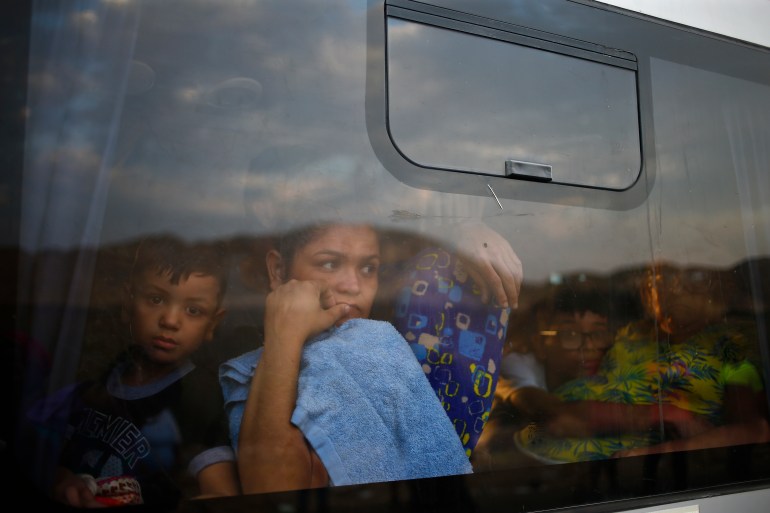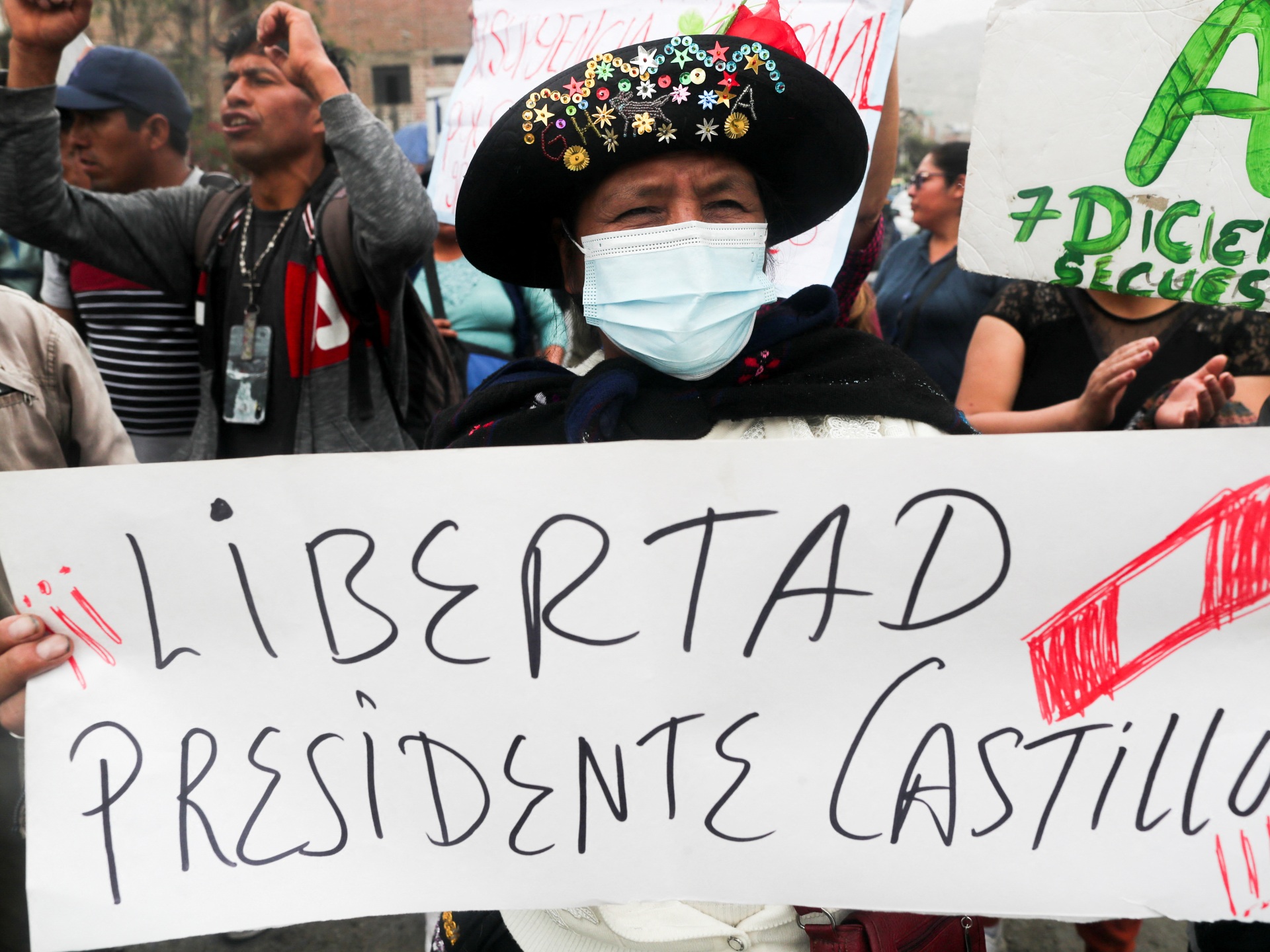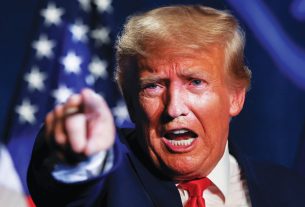Peru is in the grips of a deepening political crisis, which began in early December with the impeachment of former President Pedro Castillo.
The Peruvian legislature voted on December 7 to remove Castillo from office after the left-wing leader announced plans to dissolve Congress and rule by decree.
His removal, and subsequent arrest and detention on allegations of “conspiracy” and “rebellion”, have sparked widespread protests and spurred the government to declare a nationwide state of emergency.
Here, Al Jazeera lays out how the unrest has unfolded:
December 7, 2022
Castillo, a former teacher and union leader from rural Peru who took office last year, announces plans to “temporarily” dissolve Congress ahead of the third impeachment attempt of his embattled presidency.
He argues the move aims to “reestablish the rule of law and democracy” in the country. But opposition politicians and other observers slam his announcement as contrary to Peru’s constitution, and Congress overwhelmingly votes in favour of removing Castillo.
Shortly after the vote, Castillo is arrested by police and Congress swears in his former vice president, Dina Boluarte, as Peru’s first female president.
Protesters gather in the capital, Lima, to support Castillo, while others celebrate his removal.
December 8, 2022
A Peruvian judge orders Castillo to be detained for seven days as authorities investigate charges of “rebellion and conspiracy” against him. He is held at a police facility near the capital, Lima, where former President Alberto Fujimori is also arrested.
Castillo’s defence team argues he was arbitrarily removed from the presidency on trumped-up charges of rebellion.
“It is clear that the crime of rebellion was not committed” because it did not materialise, one of his lawyers says.
Mexican President Andres Manuel Lopez Obrador reveals that Castillo had called his office to request asylum in his country’s embassy, which he planned to grant, but the Peruvian leader was arrested before arriving.
Boluarte, Peru’s new president, pleads for a “truce” after years of political chaos. After initially saying she would serve out Castillo’s remaining three-and-a-half years as president, she suggests that calls for early elections among Castillo supporters are “respectable”.
December 9, 2022
More protests break out, particularly in rural areas that make up Castillo’s strongholds.
Local television shows footage of hundreds of farmers blocking a stretch of Peru’s main coastal highway to demand early elections. And in Lima, several hundred protesters trying to reach the Congress building clash with police, who use canes and tear gas to push them back.
The protesters are demanding Castillo’s release from prison, as well as early elections, the dissolution of Congress, and Boluarte’s removal.
“We have no authorities. We have nothing,” says Juana Ponce, one of the protesters. “It is a national shame. All these corrupt congressmen have sold out. They have betrayed our president, Pedro Castillo.”

December 10-11, 2022
Boluarte names her new cabinet. She appoints former state prosecutor Pedro Angulo as prime minister and diplomat Ana Cecilia Gervasi as foreign minister, among others.
The protests continue in several cities in Peru’s interior, including Cajamarca, Arequipa, Huancayo, Cusco and Puno, and the first deaths linked to the unrest are reported.
Clashes on December 11 between protesters and police in the southern city of Andahuaylas leave two dead and at least five injured – including a police officer – as demonstrators attempted to storm that city’s airport.
December 12, 2022
Boluarte announces plans to move elections forward to April 2024 in a bid to quell the unrest. She also declares a state of emergency in areas of “high conflict”, allowing soldiers to take more control.
But the demonstrations expand, most notably in Peru’s northern and Andean towns, and the death toll rises to at least six. Hundreds of protesters block an airport runway in the country’s second-largest city, Arequipa. Flights are cancelled and interprovincial transportation is also suspended.
Amnesty International urges the Peruvian authorities to “put an end to the excessive use of force against demonstrations and guarantee the right to peaceful protest”.
Meanwhile, Castillo releases a handwritten letter on social media that calls his successor, Boluarte, a “usurper”. The former president vows he “will not resign” and says “the people should not fall for their dirty games of new elections”.
The governments of Mexico, Colombia, Argentina and Bolivia issue a joint communique in support of the ex-president.
December 13, 2022
Supreme Court Judge Cesar San Martin Castro rejects Castillo’s appeal to end his preventive detention as authorities build their case against him.
The judge says the former president’s effort to dissolve Congress was “not a mere act of speech, but the concrete expression of a will to alter the constitutional system and the configuration of public powers”.
Earlier in the day, Castillo says he is being “unjustly and arbitrarily detained”. He thanks his supporters for taking to the streets and calls on Peru’s police and armed forces to “lay down their arms and stop killing these people thirsty for justice”.
“We have one simple objective, and that is to shut down this corrupt Congress and change direction,” 57-year-old protester Juan De La Cruz Gonzalez, from Lambayeque, tells Al Jazeera in Lima as the demonstrations continue.
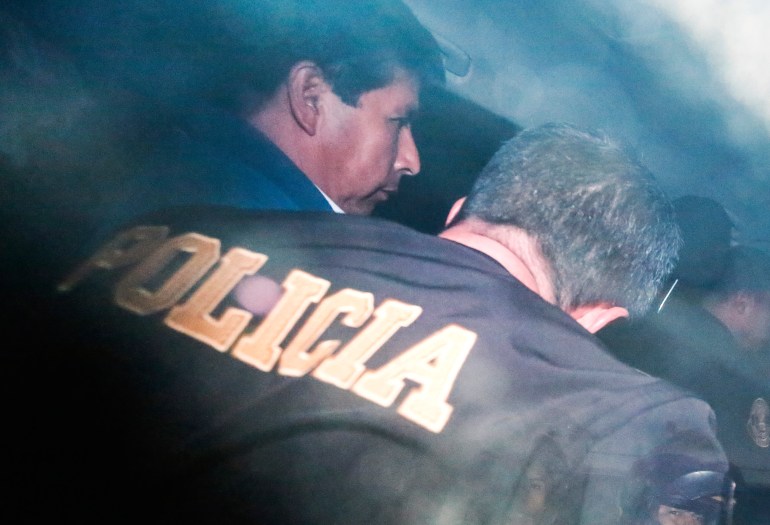
December 14, 2022
Boluarte’s administration declares a nationwide state of emergency for 30 days. The measure allows authorities to curtail freedom of movement and assembly, as well as grants the police and armed forces the power to exert more control.
Peru’s Supreme Court meets to consider prosecutors’ request to extend Castillo’s detention by 18 months, but it later suspends the session for a day.
Castillo calls on his supporters to come to the police facility where he is being held and urges the Inter-American Court of Human Rights to intercede on his behalf. “Enough already! The outrage, humiliation and mistreatment continue. Today they restrict my freedom again with 18 months of pretrial detention,” he writes in a message posted on Twitter.
Boluarte says the date of Peru’s next elections can be moved forward again, to December 2023.
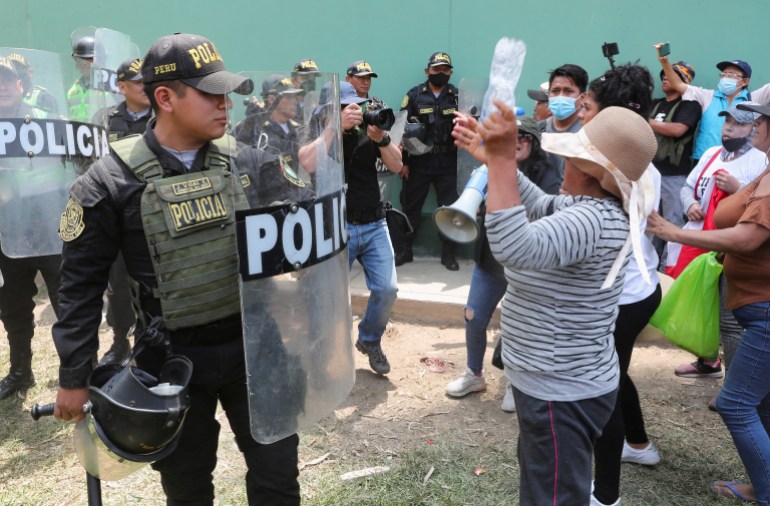
December 15, 2022
A Supreme Court panel extends Castillo’s detention by 18 months as prosecutors continue their investigation into the criminal charges against him. A judge says the former president posed a flight risk after trying to seek asylum at the Mexican embassy in Lima.
Protests erupt in Peru’s southern city of Ayacucho, with clashes between demonstrators and the military killing at least seven people.
Authorities say at least 15 people have died across the country to date, while the ombudsman’s office put the number of injured at 340, with the police saying at least half of that total is from their ranks.
Late in the day, the government imposes a curfew in 15 provinces, mostly in rural Andean regions.

December 16, 2022
Protesters continue to block key roads, forcing the closure of five airports across Peru. Around 5,000 tourists are stranded in Cusco, the Peruvian city that leads to the popular tourist site of Machu Picchu, a local mayor says.
Authorities say the death toll from the protests has now reached at least 18.
The head of the Peruvian ombudsman’s office, Eliana Revollar, tells the AFP news agency that a criminal investigation must be launched into deaths reported a day earlier in clashes between protesters and the army at the airport in Ayacucho. “People died due to gunshot wounds,” she says.
Meanwhile, in Lima, Boluarte’s government suffers a series of high-profile blows as Peru’s Congress rejects the constitutional reform needed to bring elections forward to December 2023.
Education Minister Patricia Correa also resigns from the new president’s cabinet, followed by Culture Minister Jair Perez Branez. Both decry the rising death toll from the protests.
“State violence cannot be disproportionate and cause death,” Correa writes on Twitter, with Perez Branez expressing similar sentiments. “I call on the highest level and all powers to reflect and take action to bring peace to the Peruvian people. Not one more death,” he says.
